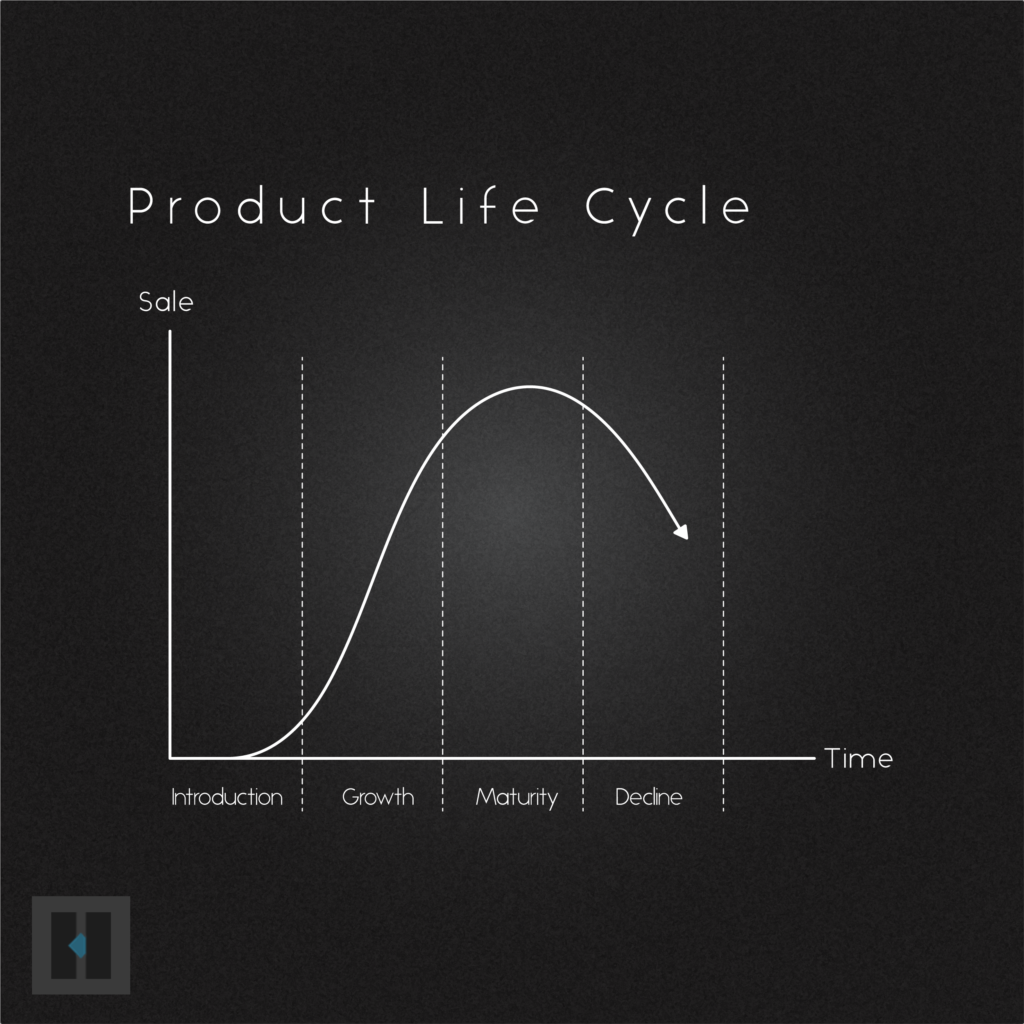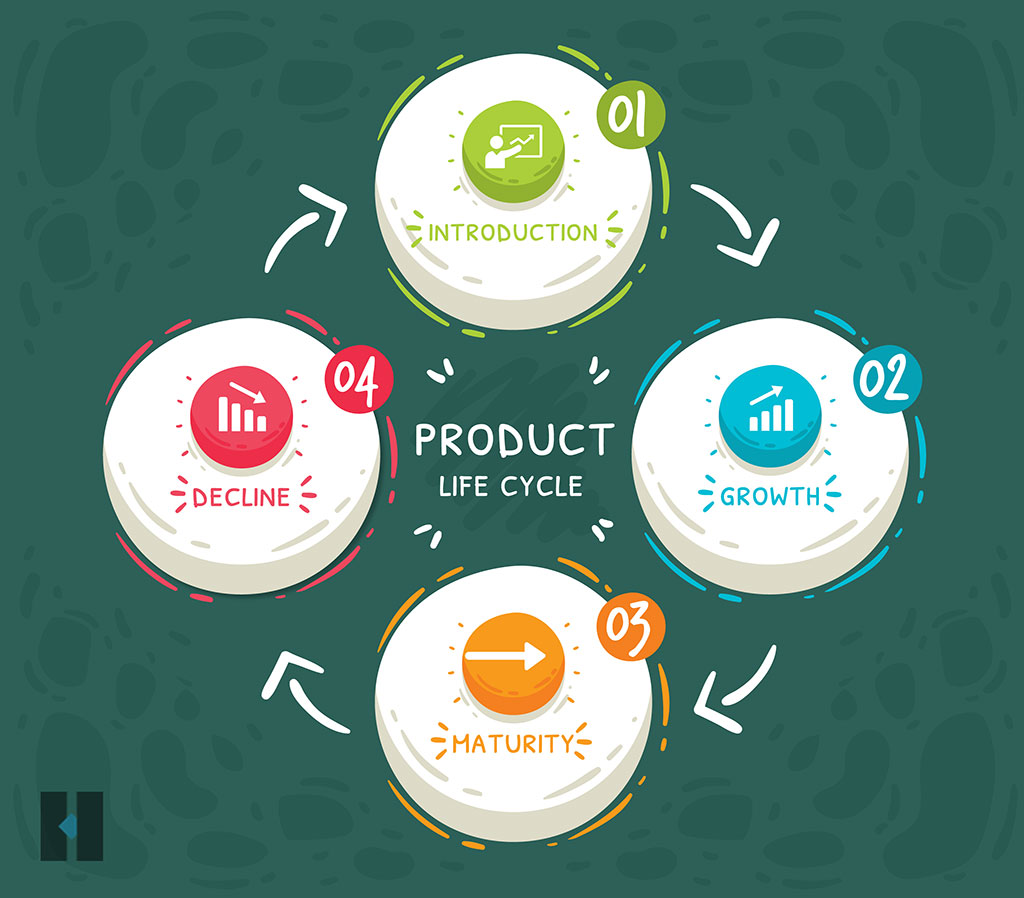Every product goes through a natural stage of development, growth, and maturity. For a project to become successful in the technology domain, it’s important to have all the right pieces in place. That’s why project managers and tech entrepreneurs rely on mapping out the various product development stages to obtain greater insight into the next steps.
The 4 stages of product development
The 4 stages of product development are as follows – R&D, Growth, Maturation, and Decline. These may be difficult to map out correctly, but over time when you scale a product you can get a better idea about the stage, it’s in. Additionally, with added innovation and new features, the modern product development process becomes increasingly complex. However, it helps to understand the nuances between stages and how products are affected via their industry trends.
When managers develop the product development process flowchart, it may resemble the chart below. There is a natural progression from one stage to another, while companies pour in marketing and technological additions. Managers can also map out their competitor’s products to understand where they stand within the matrix. There are several advantages that come with adopting a PLC (Product Life Cycle) approach when it comes to launching new products as well.

Research & Development (Market Development)
The first stage among 4 stages of product development is the initial introduction stage of development. This is when the product is being developed and is going to be launched to the market in the coming quarters. In the tech domain, this is the most critical part of the product development life cycle.
While companies invest a significant portion of their revenue into the domain of research, effective marketing is key to having a good launch. Using the most reliable marketing tools available, companies need to ensure that the launch occurs on a positive note. From a technology standpoint, the launch should be coherent with the overall brand message. This is where the product development definition becomes strengthened as new designs are being worked on.
While the product is still being developed, critical insights must be acquired from the customer domain. This is done through market testing and conducting primary research. Additionally, more features have been introduced that challenge the market and more tools are designed that customers would pay for.
Overall, the marketing strategy will seed into the product development cycle, making the launch successful via a holistic strategy. From an R&D perspective, this includes iterating on a marketable design, including widgets that will allow the product to have a unique positioning. As the market evolves over time, the R&D process will have to evolve as well.
Growth Stage (Market penetration and development)
This is the second stage in the stages of new product development, and one that a handful of brands and startups get to experience. This is the growth stage. Here, the product has been welcomed in the market and the technology is working well at scale.
It’s important to focus on growth and increased market penetration while enhancing on the product. Companies can introduce new features, new promotions and new designs that will keep the customer engaged. While representing this stage in the chart may not be as straight-forward, it’s generally seen as the most profitable time in the company.
From an operations perspective, companies need to strengthen their resources to ensure that the product grows steadily. This is done through effective management and technology scaling-up. As more users adopt your product in the market, you need to scale servers, cloud processing and databases as well. This is done by planning everything out months in advance. This is why having a product development process flowchart helps when launching a product.
Maturity Stage (Steady results over time)
Highlighting the maturity phase is difficult, but companies can get a better idea when they start to see sales flat-lining. This may not mean that the company is going into the red zone, but it may simply mean that it’s time to innovate on a new product.
When profits start to steady out over time and revenues aren’t growing as rapidly, the company is in the 3rd stage among the 4 stages of product development life cycle. This is when the product has been proven to be successful and learnings can be adopted from the model. Companies can also choose to invest more in the product, but returns are generally non-justifiable.
From a business standpoint, it makes sense to shift focus onto the next launch. When it comes to the technology necessary to continue growth, it’s better to focus on supporting-tech rather than disruptive-tech models.
Products in the maturity phase can be reinvigorated by launching in new markets or geographies. The product can also be customized to suit a B2B or B2C model. This involves shifting the product model and making it appealing to a new demographic. However, it may not be able to compare to the early days of market growth. That’s why the product is deemed to be in the mature stage.
Market Decline (Decreased profits or revenue)
The 4th stage of product development and one that every product has to go through is the decline stage. This is when there are better products in the marketplace and your solution may not be competitive anymore. Whether through price or through new features, the product may not see better results over time. Managers can think about it from the variations in the iPhone or Smart Watches. Newer models have better features, as older ones are less popular.
When products are in the market decline phase, additional marketing or technological spends create negative results for the company. The investment doesn’t justify the returns, and it’s better to let the product slowly out of commission. Several SaaS platforms call this the dip in the life cycle, and they focus on launching new versions and features. While the product is not fully taken out of the market, support and operations are reduced as customers evolve.
Don't forget to share your views on these 4 stages of product development, in comment section bellow.


